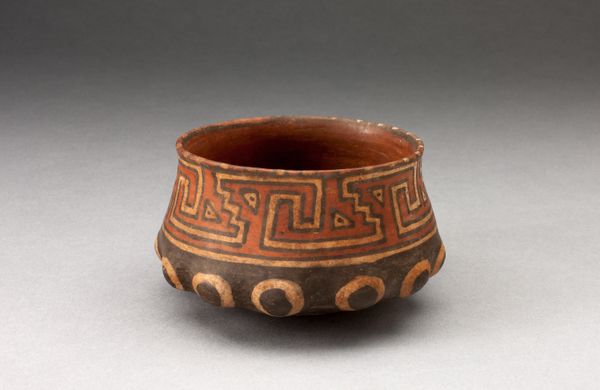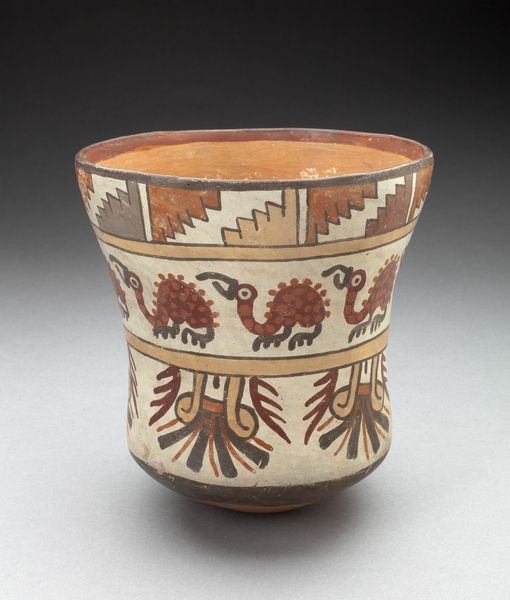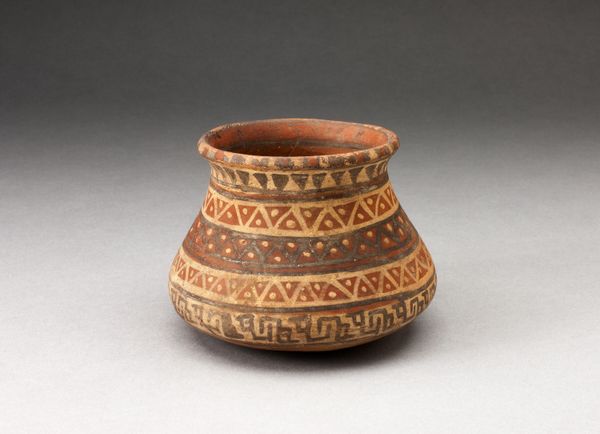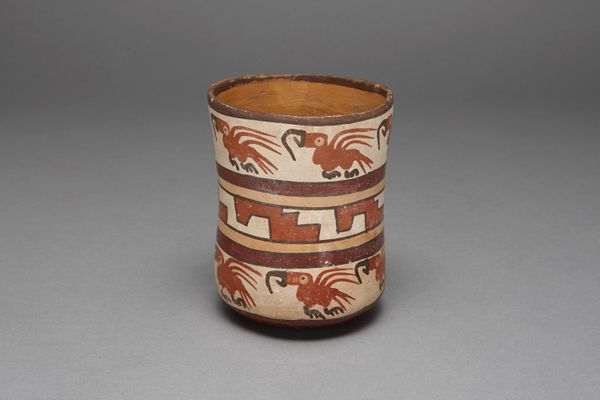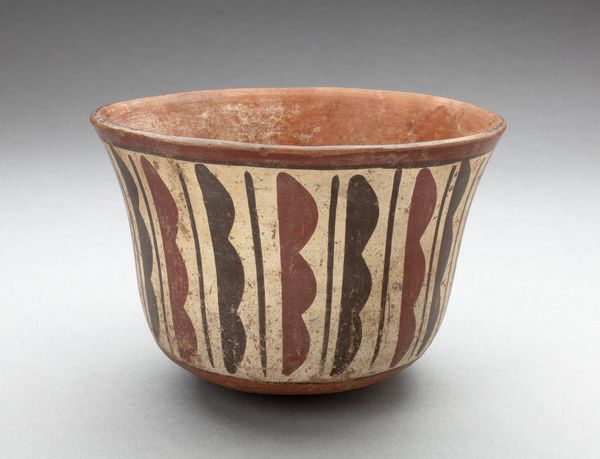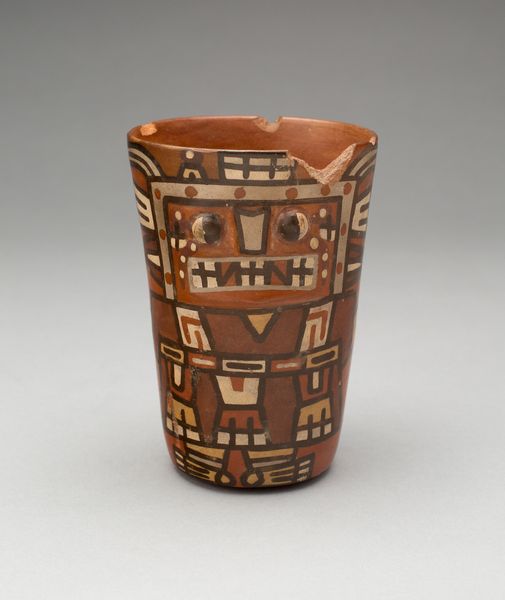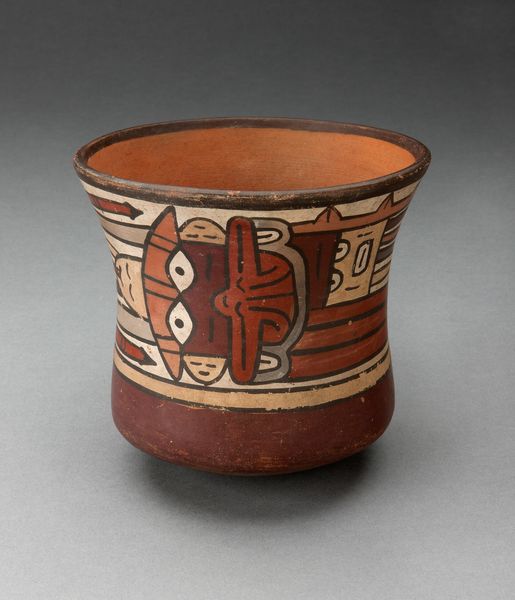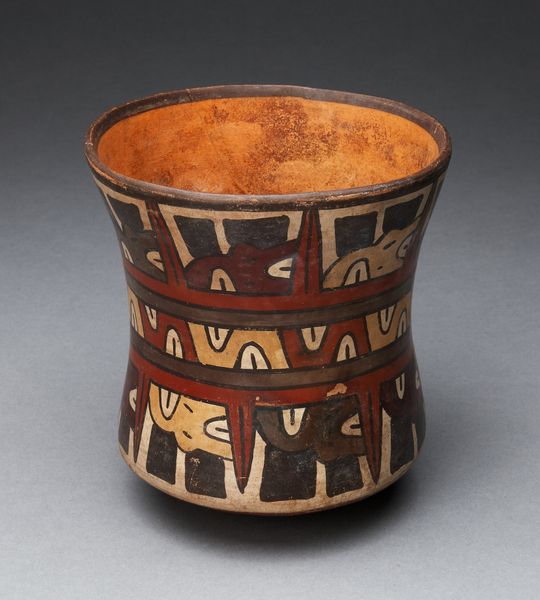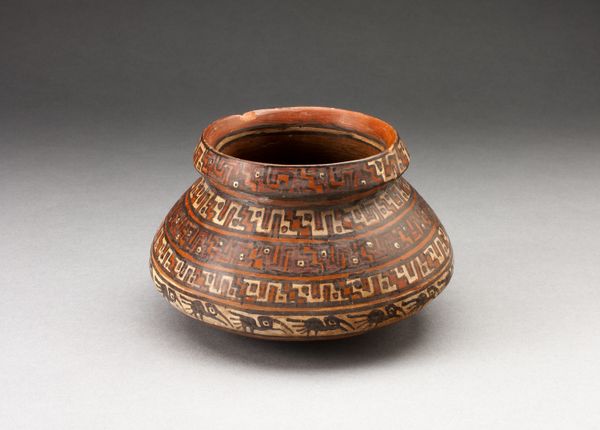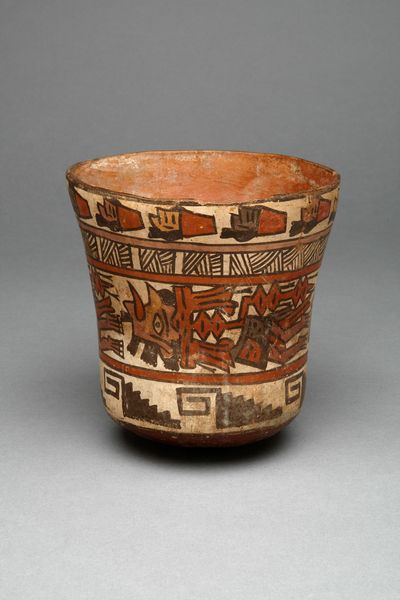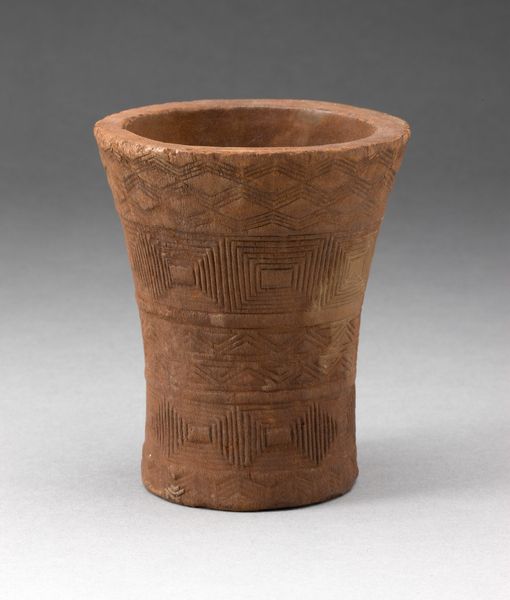
ceramic, earthenware
#
ceramic
#
earthenware
#
geometric
#
ceramic
#
indigenous-americas
Dimensions: 10.2 × 8.1 cm (4 × 3 13/16 in.)
Copyright: Public Domain
Curator: Let's consider this Nazca cup from approximately 180 to 500 AD. It is currently held in the collection of the Art Institute of Chicago and is a beautiful example of earthenware. Editor: The cup immediately strikes me with its earthy palette and how the geometric designs manage to simultaneously create structure and flow. Curator: Indeed, and it’s important to recognize the historical significance. Nazca pottery wasn’t just decorative. Cups like these played crucial roles in rituals, solidifying community bonds through ceremonial consumption. The abstraction is itself a statement. Editor: Precisely, let’s examine those rows of textile-like patterns. The interplay of dark reds, whites, and blacks presents a rhythmic experience for the viewer. Notice how the maker creates visual tension. Curator: Considering these repeating patterns, are we looking at a visual encoding of certain mythologies or societal structures? Did this patterning, perhaps, serve as a memory aid or a guide for enacting those rituals? It seems less an abstraction than a powerful language in and of itself. Editor: I find the patterns push and pull, echoing a visual dialectic—repetition and variation working in perfect harmony, and creating an optical rhythm. The very texture of the earthenware adds another dimension. It seems that material and design work together seamlessly. Curator: These Nazca artists were deeply connected to their environment. The colors derive from minerals available in the region, connecting their artistry to the land, their ancestors, and the continuity of cultural traditions. It embodies sustainability, intentionality, and profound resourcefulness. Editor: Yes, by turning our attention toward line, shape, and color we discover not only an aesthetic delight but also fundamental components within a self-contained and unified whole. Curator: Analyzing this cup forces a profound appreciation for how material culture deeply shapes the ways societies structured their world. Editor: Looking at this cup, one recognizes just how powerful formalism can be; the geometric nature is aesthetically complete.
Comments
No comments
Be the first to comment and join the conversation on the ultimate creative platform.
